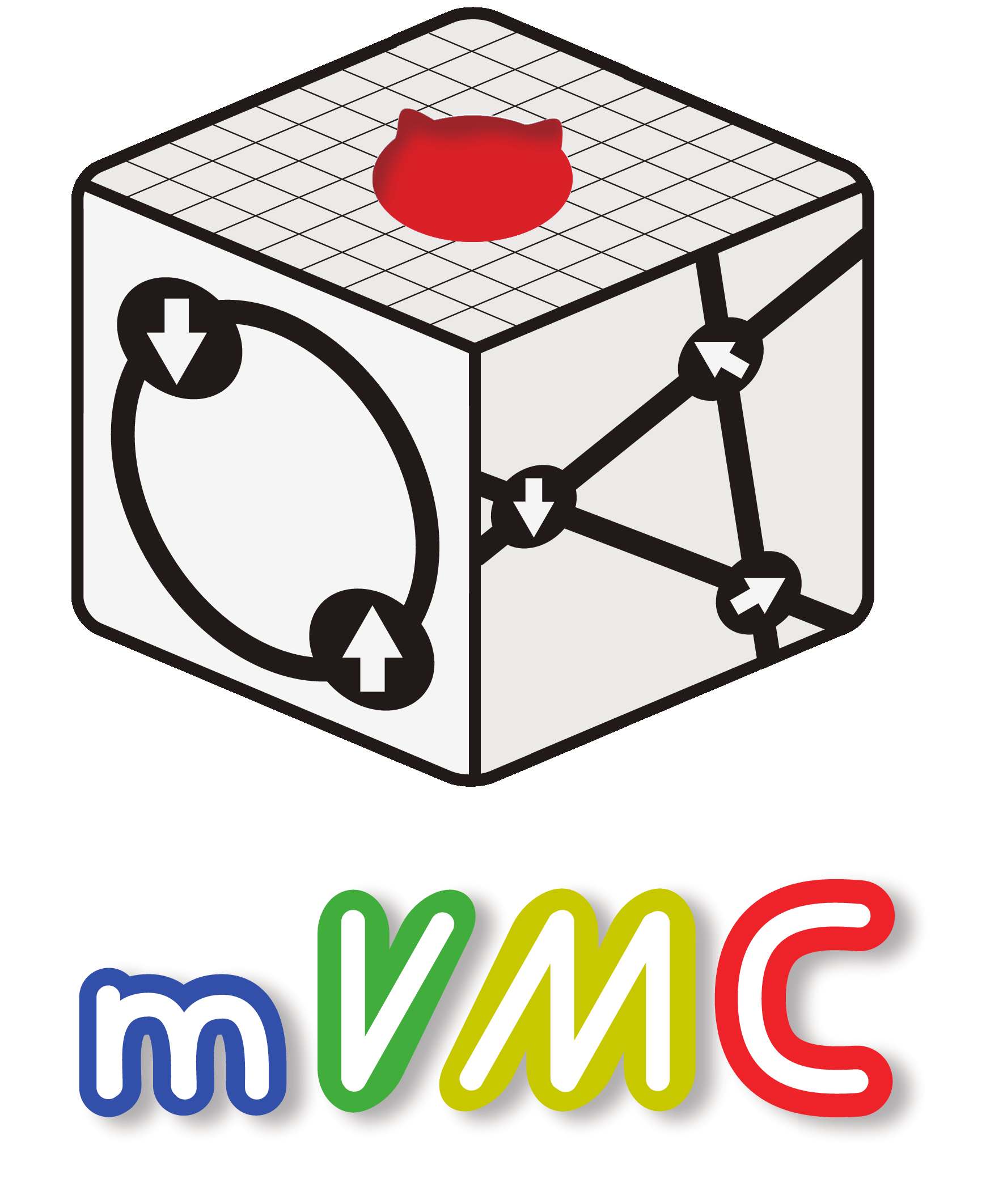What is mVMC?¶
High-accuracy analyses of theoretical models for quantum many-body systems are expected to play important role for clarifying the nature of novel quantum phases such as high-temperature superconductivities and quantum spin liquids. Furthermore, recent theoretical progress enables us to obtain low-energy effective models for real materials with non-empirical way [ImadaMiyake ]. To clarify the electronic structures of real materials and control the physical properties, it is important to perform the high-accuracy analyses for the low-energy effective models. One of the most reliable theoretical tools for treating the strongly correlated electron systems is the exact diagonalization method. However, applicable range of system size is strongly limited in the exact diagonalization method. Variational Monte Carlo method [Gros ] is one of promising way to perform the high-accuracy calculations for the larger system sizes beyond exact diagonalization method. Although the strong limitation of the variational wave function is the origin of the poor accuracy of the variational Monte Carlo method, recent development of the theoretical method and computers relaxes the limitation of the variational wave functions and enable us to perform the highly-accurate calculations [Tahara2008 , Misawa2014 , Morita2015 ].
mVMC (many-variable Variational Monte Carlo method) is a software for performing the highly-accurate variational Monte Carlo calculations with the simple and flexible user interface. mVMC also supports the large-scale parallelization. For the conventional models in strongly correlated electron systems such as the Hubbard model, the Heisenberg model, and the Kondo-lattice model, users can perform the calculation by preparing the one input files whose length is shorter than ten lines. By using the same input file, users can perform the exact diagonalization through HPhi [HPhi ]. Thus, it is easy to examine the accuracy of the variational calculation for small system sizes and to perform the calculations for large system sizes that can not be treated by the exact diagonalization. A broad spectrum of users including experimental scientists is cordially welcome.
Overview of mVMC¶
By using mVMC, the following calculation can be done:
- The variational wave function which gives the minimum value of the expected value of energy in the range of the degree of freedoms of variational parameters is numerically generated. The calculation limited to the partial space divided by quantum numbers is also possible.
- The expected values of the physical quantities such as correlation functions can be calculated by using the generated variational wave functions.
The calculation flow in mVMC is shown as follows:
- Read input files (*.def)
- Optimize variational parameters \(\vec{\alpha}\) to minimize \(\langle {\cal H} \rangle\)
- Calculate one body and two body Green functions
- Output variational parameters and expected values
In calculation, the simple parallelization for the generation of the real space arrangement \(|x\rangle\) and the collecting samples and the calculation result of expected energies is implemented. Following the procedure for each cluster computers, the parallelized calculation using MPI is automatically done by indicating the parallel number. However, mVMC cannot execute under the environment where the MPI job is forbidden such as the front-end of system B at ISSP. In mVMC, we use PFAPACK [PFAPACK ] to compute the Pfaffian matrix.
License¶
The distribution of the program package and the source codes for mVMC follows GNU General Public License version 3 (GPL v3).
We would appreciate if you cite the following article in your research with mVMC: mVMC - Open-source software for many-variable variational Monte Carlo method, Takahiro Misawa, Satoshi Morita, Kazuyoshi Yoshimi, Mitsuaki Kawamura, Yuichi Motoyama, Kota Ido, Takahiro Ohgoe, Masatoshi Imada, Takeo Kato, arXiv:1711.11418. [mVMC ]
Copyright¶
©2016- The University of Tokyo. All rights reserved.
This software is developed under the support of “Project for advancement of software usability in materials science ” by The Institute for Solid State Physics, The University of Tokyo.
Contributors¶
This software is developed by following contributors.
- ver.1.0.3 (released at 2018/7/23)
- ver.1.0.2 (released at 2017/8/25)
- ver.1.0.1 (released at 2017/6/8)
- ver.1.0.0 (released at 2017/5/23)
- ver.0.2.0 (released at 2017/3/16)
- ver.0.1.1 (released at 2016/12/16)
- ver.0.1.0 (released at 2016/10/26)
- Developers
- Takahiro Misawa (The Institute for Solid State Physics, The University of Tokyo)
- Satoshi Morita (The Institute for Solid State Physics, The University of Tokyo)
- Takahiro Ogoe (Department of Applied Physics, The University of Tokyo)
- Kota Ido (Department of Applied Physics, The University of Tokyo)
- Masatoshi Imada (Department of Applied Physics, The University of Tokyo)
- Yuichi Motoyama (The Institute for Solid State Physics, The University of Tokyo)
- Mitsuaki Kawamura (The Institute for Solid State Physics, The University of Tokyo)
- Kazusyohi Yoshimi (The Institute for Solid State Physics, The University of Tokyo)
- Project coordinator
- Takeo Kato (The Institute for Solid State Physics, The University of Tokyo)
- Developers
Operating environment¶
mVMC is tested in the following platform:
- The supercomputer system-B “sekirei”S in ISSP
- K computer
- OpenMPI + Intel Compiler + MKL
- MPICH + Intel Compiler + MKL
- MPICH + GNU Compiler + MKL
Manual for mVMC¶
- How to use mVMC?
- Tutorial
- Input files for Standard mode
- Input files for Expert mode
- List file for Input files (namelist.def)
- ModPara file (modpara.def)
- LocSpin file (locspn.def)
- Trans file (trans.def)
- InterAll file
- CoulombIntra file (coulombintra.def)
- CoulombInter file (coulombinter.def)
- Hund file (hund.def)
- PairHop file
- Exchange file (exchange.def)
- Gutzwiller file (gutzwiller.def)
- Jastrow file (jastrow.def)
- DH2 file
- DH4 file
- Orbital/OrbitalAntiParallel file (orbitalidx.def)
- OrbitalParallel file
- OrbitalGeneral file
- TransSym file (qptransidx.def)
- Files to set initial values of variational parameters
- OneBodyG file (greenone.def)
- TwoBodyG file (greentwo.def)
- Output files
- Algorithm
- Program for the unrestricted Hartree-Fock approximation
- HPhi/mVMC Fourier-Transformation utility
- Downfolding with Wannier functions
- Acknowledgement
